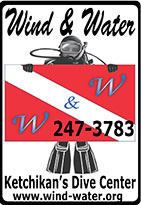|
Fish Factor Alaska Fisheries in Full SwingBy LAINE WELCH
July 10, 2016
For salmon, total catches by July 8 were nearing 28 million fish, of which 10 million were sockeyes, primarily from Bristol Bay. Last week marked the catch of the two billionth sockeye from the Bay since the fishery began in 1884.
Other salmon highlights: [Correction] Southeast trollers wrapped up their first Chinook opener in just five days on July 5, with the preliminary catch estimated at around 80,000 fish. Fish tickets are still being counted but it appears ‘very likely’ that the fleet will get another opener in August to tap the target of 122,000 treaty kings. [End Correction] Sockeye catches at the North Peninsula were so strong, the fleet was put on limits by Peter Pan Seafoods, the lone processor in the region. The harvest there topped 1.3 million reds last week. It’s been slowing going around Kodiak Island where the catch was approaching 700,000 fish, mostly sockeyes. The pace was picking up at Cook Inlet with a catch nearing 400,000 of primarily reds. At Prince William Sound, the harvest of chums, pinks and sockeyes topped 7.6 million fish. Copper River Seafoods saved the day for Kotzebue fishermen who originally were beached due to no salmon buyers. They will be out on the water this week tapping on a chum catch projected at 300,000 – 500,000 pounds, depending on air freight capacity. Chum catches also were adding up at the Lower Yukon, totaling 334,000 fish so far. Overall, Alaska’s 2016 salmon harvest is pegged at 161 million fish, down 40 percent due to an expected shortfall of pinks. In other fisheries: Southeast’s summer Dungeness crab fishery is going strong and fishermen are averaging $3.05 a pound, up slightly from last year. The fishery will run through mid-August with a fall opener set for October. The combined dungy fisheries are expected to yield just under 3 million pounds. Norton Sound’s small boat, summer red king crab fishery opened on June 27 with a harvest limit of 440,137 pounds. The golden king crab fishery along the Aleutians opens August 1 with a catch of about six million pounds. Alaska longliners have taken 55 percent of their 17 million pound halibut catch, with Kodiak and Homer nearly tied for landings. Halibut is still fetching between $6-$7 a pound at major ports. Sablefish catches also are at 55 percent of that fishery’s 20.3 million pound quota. Increasingly popular lingcod fishing kicked off July 1 at Cook Inlet for jig and hand trollers with a catch of 202,000 pounds. At Prince William Sound, the lingcod catch limit is nearly 37,000 pounds. Lingcod can grow to five feet long and weigh up to 80 pounds. The average price to fishermen last year was $1.35 a pound. Trawlers are targeting Pacific Ocean Perch and two types of rockfish in the Western Gulf and around Yakutat. Rockfish prices for a dozen species can range from a low of $.16 a pound for red stripes to $1.21 for yellow eye (red snapper). Vessels also are targeting pollock, cod and flatfish in the Bering Sea. The Gulf reopens to pollock fishing on August 25th. Groundfish gives big Throwing pies in the face of fish policy makers proved to be a windfall for needy folks in Kodiak. The event topped off the recent Groundfish Celebration that drew upwards of 2,000 people and raised $17,000 for the Brother Francis Shelter, which serves the homeless and working poor in Kodiak. The celebration, sponsored by a wide array of industry stakeholder, showcased the importance of cod, pollock, rockfish, flounders and other groundfish to Kodiak, which contribute nearly 85 percent of the town’s landings. It also is home to eight seafood companies, the most in Alaska, which employ the largest resident processing work force year round. “We are the working waterfront!” chanted workers from each of the plants, along with fuel and gear providers, transporters, vessel owners and others marching in a mile-long parade. Their message was aimed at visiting North Pacific Council members who are crafting a new management plant to reduce bycatch in trawl fisheries. As the nation’s #2 port for seafood landings, Kodiak wants to make sure any changes ensure the same amounts of fish keep coming into town. Bidding by wannabe pie throwers was fast and furious, some paying several thousand dollars for the privilege. Volunteers included Glenn Merrill, Assistant Regional Administrator for NOAA Fisheries, Duncan Fields, outgoing member of the North Pacific Fishery Management Council, and Joe Plesha, General Council for Trident Seafoods. Brother Francis Shelter director Monte Hawver said “every dollar of the $17,000 donation will be put towards programs that help keep people sheltered, fed and housed.” Death by sunscreen All that sun block being slathered on by beach-goers around the world is causing major damage to ocean corals. A new study by the University of Central Florida reveals that the mix of 20 chemicals in even one drop of sunscreen can severely damage fragile coral reef systems. The researchers estimate that up to 10 per cent of the world's coral reefs are at risk of ‘death by sunscreen.’ The study was done in the U.S. Virgin Islands, Hawaii and Israel and confirms research done a few years ago by Italian scientists in waters of Mexico, Indonesia, Thailand and Egypt. The World Trade Organization reports that 10 per cent of world tourism takes place in tropical areas, with nearly 80 million people visiting coral reefs each year. That adds up to roughly 14,000 tons of sunblock oozing into these sensitive areas. The most widely used sunscreen ingredient -oxybenzone - leaches coral of its nutrients and destroys the tiny algae that live within coral colonies and provide its vibrant colors. The studies showed that complete bleaching of coral occurred within 96 hours, and also disrupted the development of fish and other sea life. But sunscreens from beachgoers is just part of the concern. Anytime people wear the lotions, it ends up in waterways when they step into the shower to wash it off, just like harmful chemicals in household cleaning products are washed down drains and into sewage systems. As a result, some local businesses have started to ban the use of harmful sunscreen in their waters. The U.S. National Park Service for South Florida, Hawaii, U.S. Virgin Islands, and American Samoa recommend using "reef friendly" sunscreen made with titanium oxide or zinc oxide, which are natural mineral ingredients.
Laine Welch ©2016 Laine can be reached
at msfish[AT]alaska.com
Representations of fact and opinions in comments posted below are solely those of the individual posters and do not represent the opinions of Sitnews.
SitNews ©2016 Stories In The News Ketchikan, Alaska
|
||||





